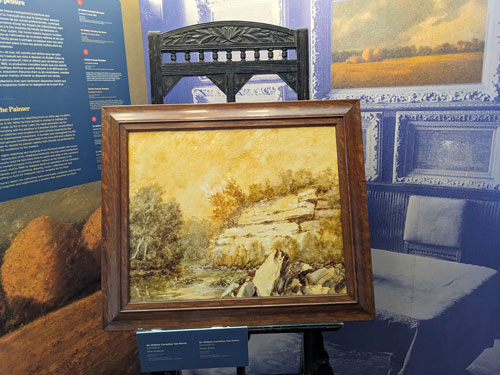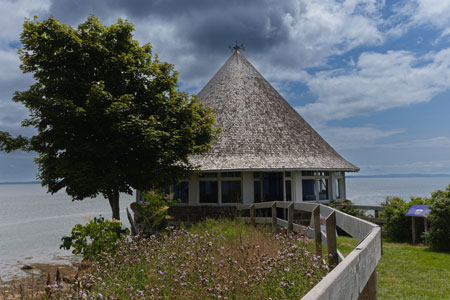

The two times my wife and I have visited Ministers Island we have parked the car on the mainland side and walked across the bar. We want the exercise, yes, but also the experience of approaching a separate world. And there may be a blue heron standing in the fog or a couple of men digging clams to enhance the approach.
David Sullivan’s Minister’s Island: Sir William Van Horne’s Summer Home in St. Andrews (2007) tells the remarkable story of this 500-acre island just off that New Brunswick resort community.
Open seasonally to the public—during low tide—the place offers a mix of nature and history. You can walk the trails, including a wonderful allée of cedars, visit the massive barn with its collection of vintage farm machinery, or proceed directly to Van Horne’s sandstone mansion, “Covenhoven,” named after his father, Cornelius Covenhoven Van Horne.
This summer there’s an extra incentive to visit the latter: “From The Last Spike to Art Connoisseur: A Journey with Sir William Cornelius Van Horne.” Designed by Exporail, the Canadian Railway Museum in Montreal, the exhibition highlights the Illinois-born railroad tycoon’s artistic chops and the remarkable collection of art he gathered in his lifetime.

As president of the Canadian Pacific Railway—he oversaw the completion of the country’s first transcontinental rail line—he had the wherewithal to pursue his artistic inclinations and gather an impressive group of European and Canadian masterworks.
As curator Jean-Paul Viaud notes, painting helped provide some balance to Van Horne’s life as a businessman. The exhibition, which has been mounted in his main floor studio, features two easels from his Montreal residence and ten paintings owned by the province of New Brunswick. The canvases, mostly landscapes, reflect a romantic sensibility, from “Sunburst over Ministers Island” to “Moonlight on the Sea.”
The star of the show is “.007,” a painting prompted by a short story of the same name by Rudyard Kipling. Van Horne had read the tale, told from the viewpoint of a steam engine named .007, and invited the famed writer to take a cross-Canada rail tour.
Upon Kipling’s return to Montreal, Van Horne presented him with the large oil on canvas, which illustrates the tale’s final scene as pictured from the rear platform of the painter’s private railway car, the Saskatchewan. The only train-themed painting by Van Horne, the canvas has been in storage for almost a century. It’s a powerhouse of a picture.
Van Horne, the art collector, shows up in a series of exhibition banners offering reproductions of some of the paintings he acquired. It’s an all-star line-up: prime works by the likes of Inness, Delacroix, Sisley, Daubigny, Cézanne, Rembrandt, and Renoir. Van Horne had an excellent eye.

The exhibition highlights other aspects of Van Horne’s artistic practice and predilections, including watercolor studies of fungi, his collection of Japanese ceramics, his forays into architecture, and his illustrated travel journals.
After viewing the show, tour the rest of the mansion, which includes an exhibit devoted to Passamaquoddy artists, and roam the grounds where you’ll find a bath house and a windmill, plus the stone remnants of greenhouses. Whatever you do, keep an eye on the time and the tides.
“From The Last Spike to Art Connoisseur: A Journey with Sir William Cornelius Van Horne” is on view through Sept. 30. The show will travel to other venues in the coming years. Open hours and ticket purchases are available online at www.ministersisland.net.






